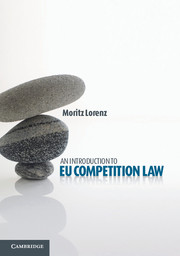Book contents
3 - Possibilities for cooperation under Article 101 TFEU
Published online by Cambridge University Press: 05 May 2013
Summary
Introduction
Article 101(1) TFEU prohibits any kind of cooperation between undertakings which leads to a distortion of competition within the internal market. However, Article 101(3) TFEU provides for an exemption from this general prohibition. Some agreements, while having anticompetitive effects, will also lead to substantial pro-competitive benefits, such as market entry by new players or the introduction of new products. In this case an exemption may be available. For a complete assessment of the effects on competition resulting from a particular agreement, all relevant market factors must be considered in detail. In particular, material conditions under which competitive forces operate on the market must be taken into account: size and number of competitors, customer fidelity to existing brands, existing intellectual property rights (hereinafter: IPRs) etc. These agreements do not fit perfectly into one analytical pattern and their proper assessment requires an in-depth analysis, not only of the factual circumstances, but also of economic data pertaining to particular market conduct.
Different block exemptions cover categories of agreements to increase legal certainty for the undertakings concerned. Parties to agreements qualifying for block exemption are relieved of the burden of showing that their individual conduct meets the requirements set out in Article 101(3) TFEU. Since the application of a block exemption is based on the presumption that all restrictive agreements covered by it fulfil the conditions of Article 101(3) TFEU, the parties merely have to prove that they fall within the general scope of application of the block exemption. An agreement benefiting from a block exemption may not be declared invalid by a national court. However, under certain circumstances, the Commission and national competition authorities are empowered to withdraw the block exemption.
- Type
- Chapter
- Information
- An Introduction to EU Competition Law , pp. 128 - 187Publisher: Cambridge University PressPrint publication year: 2013



